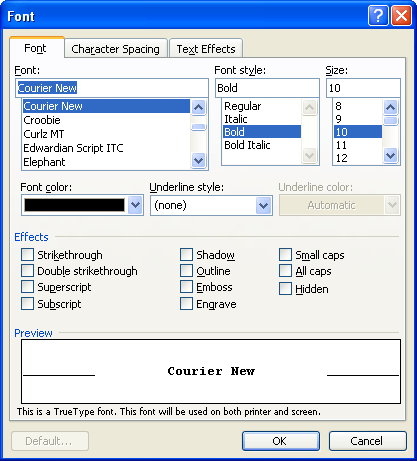

When you craft your resume, think of yourself as a marketing team of one. Every aspect of an advertisement’s design, from the imagery to the layout, and the way the words appear on the page, should get a potential customer thinking positively about the product or service being sold. You probably didn’t imagine something traditional and straightforward, right? If you’re going to dive into a fairy tale universe packed with dragon-slayers and towering castles, you’ll probably expect to see a font with a few flourishes and curlicues.įont choice is a crucial part of any marketing team’s design. You wouldn’t expect a marketing team to use anything flowery, ornate, or thick and bold if they’re trying to get customers to think thin: You probably dreamed up something as slender and condensed as the phone itself.

What kind of design and font do you picture in the marketing materials? Imagine an ad for a sleek, ultra-thin cell phone.

We'll also talk about why employers care about font choice and how you can use it to set yourself apart from the competition. In this post, I'm going to walk you through the 10 best fonts for your resume (and when to use each). But font is a key part of your first impression to recruiters and employers. This list of fonts that work well on newsletters includes standards like Times Roman and new faces as well.When it comes to crafting the perfect resume to land your dream job, you probably think of just about everything but the font. For example, use 14-point leading with 12-point type.Īlthough a serif font is always a good (and safe) choice, legibility and suitability for your design should be the deciding factors. Adding 20 percent or about 2 points to the point size of the text is a good starting point for figuring leading. However, more leading can translate to more pages in the newsletter.

Some typefaces may require more leading than others to accommodate long ascenders or descenders.
#GOOD FONTS FOR HEADINGS IN MICROSOFT WORD PROFESSIONAL#
While a professional designer may see the unique beauty in each typeface, for most readers, the face is just another font and they probably won't know that if it is the ubiquitous Times New Roman or Arial. It won't have an extreme x-height, unusually long ascenders or descenders, or overly elaborate letterforms with extra flourishes. Choose an unobtrusive font: For most newsletter articles, the best fonts are ones that do not stand up and shout at the reader.As with books, you won't go horribly wrong with most of the classic serif or classic sans serif choices. Choose a serif or sans serif font: The text of the articles in the newsletter is not the place for blackletter, script, or most decorative fonts.The newsletter nameplate, headlines, kickers, page numbers, pull-quotes and other small bits of text can often take decorative, fun, or distinctive fonts.įour guidelines will help you pick the right fonts for your printed newsletters. However, because most newsletters have short features and a variety of articles, there is room for variety. That is, they should stay in the background and not distract the reader from the message. The fonts used in print newsletters should be much like fonts for books. Lifewire / Jacci Howard Bear / Adobe / Microsoft These newsletter templates (top from Adobe InDesign bottom from Microsoft Publisher) use serif, sans serif, and script fonts.


 0 kommentar(er)
0 kommentar(er)
